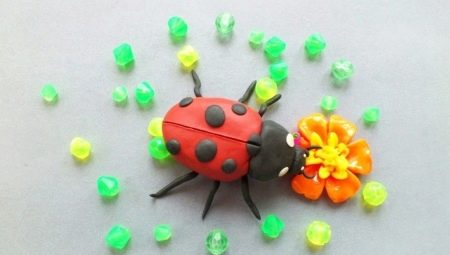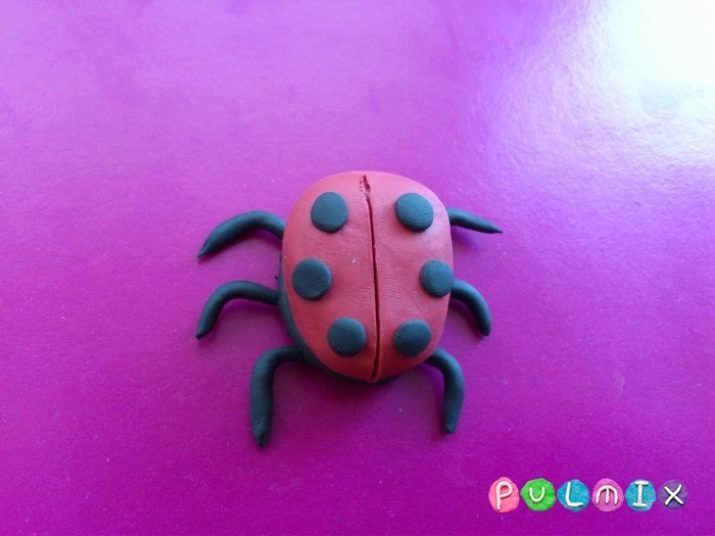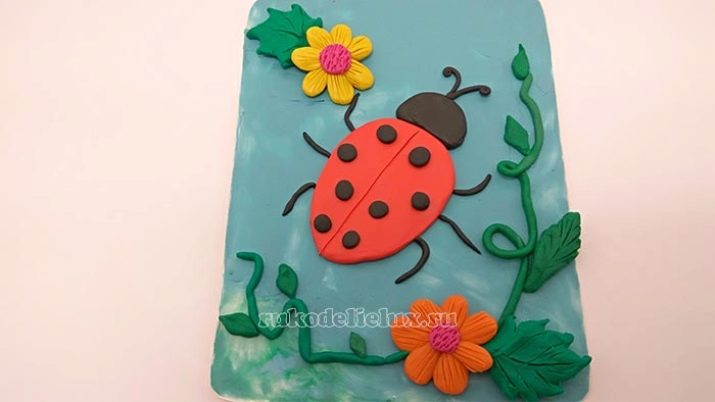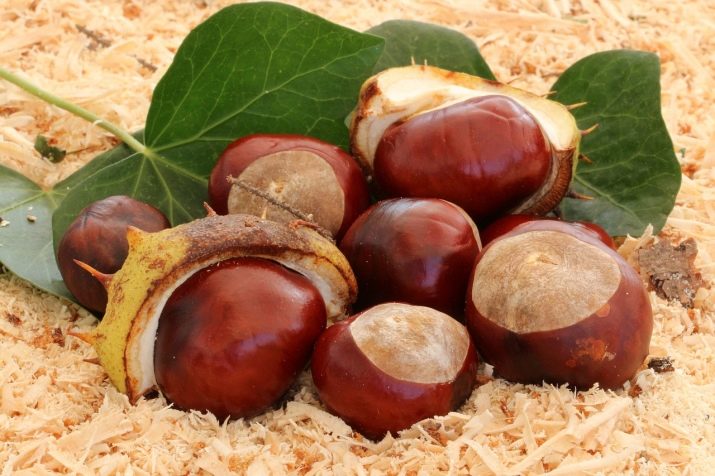How can you mold a ladybug from plasticine?

Children love cute tiny ladybugs. Even those who are afraid of bugs and spiders boldly take in their hands a red insect with black spots, because it personifies the warm sun. Kids are happy to master the modeling of a ladybug. The task of the parents is to choose bright, safe plasticine and teach the baby simple techniques.



Simple option
Let's start to master the sculpting technique from a simple version of a ladybug. The actions are simple, suitable for young children and for beginners.
Invite your child to choose three colors of plasticine - red, black and white. Most likely, he himself will name the correct shades.

Set the white aside, from the red, kneading the material in your hands, roll a ball the size of a walnut - this will be the back. Use a black piece to form a belly cake.

Now you need to fold the two pieces, adjusting the size to one another. It turned out to be a rounded beetle body.
First, we will do the work with the bottom of the workpiece. On a black background, use a stack to make notches: in the center - longitudinal, on the sides - transverse (from 7 to 9 pieces). Thus, we get a beautiful pattern on the abdomen.

Let's move on to making the legs. Roll 6 small black balls, put each of them between your palms and move back and forth, trying to lengthen the blanks.
Press the legs obtained in this way to the sides of the ladybug, 3 legs on each side.

Turn the bug over to the red side and bend its legs slightly. Draw a longitudinal line along the back, dividing the surface in half. Now start shaping the black spots.To do this, roll 6 tiny balls from plasticine and put them on the back of the beetle - 3 on each side.

Form another ball, larger, it will become the head. It is necessary to make a hemisphere out of it. Press the workpiece on one side until a plane is formed, with this end connect the head to the body.
Make two small round plates from white plasticine, lay a tiny ball on them - the eyes are ready. Fasten them on your head. It remains to attach antennae, and a cute insect can decorate a flower pot, vase, any suitable object.

How to make an applique?
The ladybug is a beautiful bright insect, and in the company of colorful flowers you will get an amazing summer picture. It can be made with your own hands from plasticine in the form of an applique. We will tell you step by step how to do it.

For work, prepare a cardboard and a set of plasticine. After mixing the pieces of blue and gray material, soften it and spread it evenly onto the cardboard.


Place the ladybug in the center of the applique. For the calf, form a red flattened hemisphere and a compact black head next to it. The insect should be turned diagonally relative to the edges of the cardboard.

Next, make a depression along the back of the beetle and prepare all the missing elements from black plasticine - 6 legs, 8 spots and 2 antennae. Glue the blanks to the body of the ladybug.

Now you can start decorating. Flowers will be located in the free corners of the cardboard. Form 3 leaves with carved edges of different sizes from green plasticine, draw veins on them. Sculpt a simple flower out of yellow and pink material.
Place the largest sheet in the lower corner of the background. Glue a medium-sized leaf to the upper corner and align with the flower.

Having rolled out the green plasticine in the form of a rope, lay it out at the bottom of the applique with a flexible stem, decorate with the remaining carved leaf and add more tiny leaves. Form a simple flower from orange and pink plasticine, place it on a curling stem.
Fill the empty field with colored plasticine peas, and add the eyes to the ladybug. The application is ready, you can decorate a child's room with it, and even take part in an exhibition of children's creativity.

How to make a fun figurine?
For a small cheerful bug, you will need red and black plasticine; for the muzzle, you can choose material of pink, yellow or flesh color.

Blind 2 round balls of different sizes from black plasticine - for the calf and the head. Make a light-colored flat cake that will become the insect's face later on.

Connect the blank for the head with the muzzle. To make the eyes, roll 2 small white balls, place a tiny black plate in the center of each of them.

Place the eyes in the upper part of the face, under them glue the red oval nose. Just draw a smiling mouth with any sharp object. Attach tiny plasticine balls to two pieces of wire and secure at the top of the head. It turned out to be a graceful pretty antennae. Connect the head and torso.

It's time to tackle the wings. From two pieces of red plasticine, make blanks that resemble drops in shape, only flat. Decorate them with tiny black plasticine peas. Fasten the finished wings on the back.

Make 6 thin legs in the form of plastic ropes. Glue 3 legs to each side of the insect.

Children will definitely like such an unusual handsome guy.

Modeling with natural materials
Natural material combined with plasticine products gives great opportunities for children's creativity. A homemade ladybug surrounded by red rowan, leaves from a herbarium, moss will look unusually beautiful. And nuts and chestnuts can be used to make the bug itself. We will tell you step by step how to do it.
With walnut shells
For work, we need a walnut shell, gouache, a brush and plasticine.


Paint the shell of the nut with red gouache on the outside, give it time to dry.

Roll a small ball of black plasticine and attach to the shell, forming the head of the bug.
Twist the black material into a thin string. Glue it longitudinally to the shell, dividing the insect's back in half.

Prepare 8 black miniature round plates from plasticine and decorate the back of the bug with them.
It's time to "revive" the insect's face. Make your eyes out of white plasticine, complemented by tiny black balls. Just paint a smile.

Next, roll up a long thin rope and cut 6 legs out of it. Clip them to the abdomen and arrange them nicely. It turned out to be a ladybug with a sturdy nut-shell body.


With apple
The ladybug, which we made from walnut shells, in company with an apple, looks spectacular. The composition can be composed in several ways.
-
Real apple... Prepare a large natural apple, beautifully shaped, without defects. On the belly of the beetle (on the inside of the shell), glue a piece of plasticine. Use it to secure the ladybug to the apple.

- Cardboard... Craft in the second way can be done from yellow cardboard. Draw an apple on it and cut it out.

Fix the ladybug, as in the first case, with plasticine on the abdomen.
-
Plasticine... For the third craft, you will need a plasticine apple. Make it yourself. Roll up a ball of yellow, green, or red plasticine.

Use your fingers to sculpt it into an apple shape, sloping slightly downward. Gently squeeze out a hole from above.
Make a tail from brown plasticine, and an elegant leaf from green material. Connect the ponytail with the leaf and set it in the hole. If the fruit is large, the ladybug can be fixed on its surface. Place a small apple next to the bug on any stand.

With chestnut
For the craft, we need a chestnut fruit and plasticine of red, black, white colors. Remember the red material in your hands until you feel its pliability and plasticity. Then roll up the ball. When it acquires a plastic structure, flatten the workpiece to a soft plate.

Wrap the chestnut in the plate, use your fingers to achieve an even, smooth surface. In this way, the body of the beetle will be formed.

Blind the head from black material and connect it to the body. Fix two white balls on it and gently flatten them. Place tiny black plates in each white circle. The beetle eyes are ready.
Fasten a thin black plasticine plait in the center of the back. Make miniature balls, flatten them and glue to the back of the insect in the form of beautiful black specks.

Roll out another thin plasticine rope, cut into 6 pieces and fix them in the form of paws on the belly of the bug.

You can plant a ladybug on a leaf drawn on green paper.

When doing crafts with children, it is not necessary to follow the advice of the master class thoroughly, let the kids fantasize. It's not scary if the apple is purple, and the ladybug is green, it's just that a little artist sees his masterpiece this way.
It is clearer about how you can mold a ladybug from plasticine in the video below.








